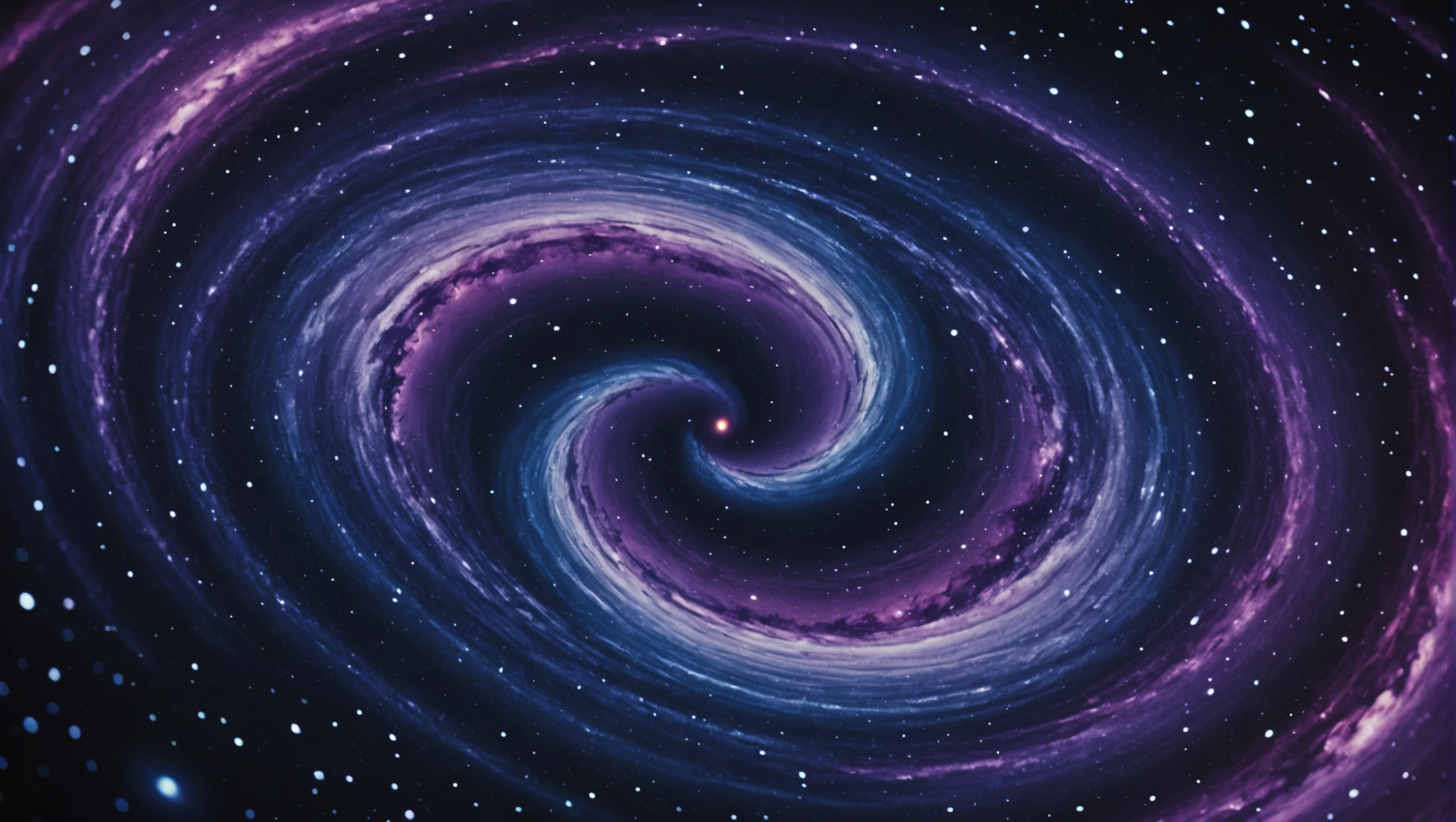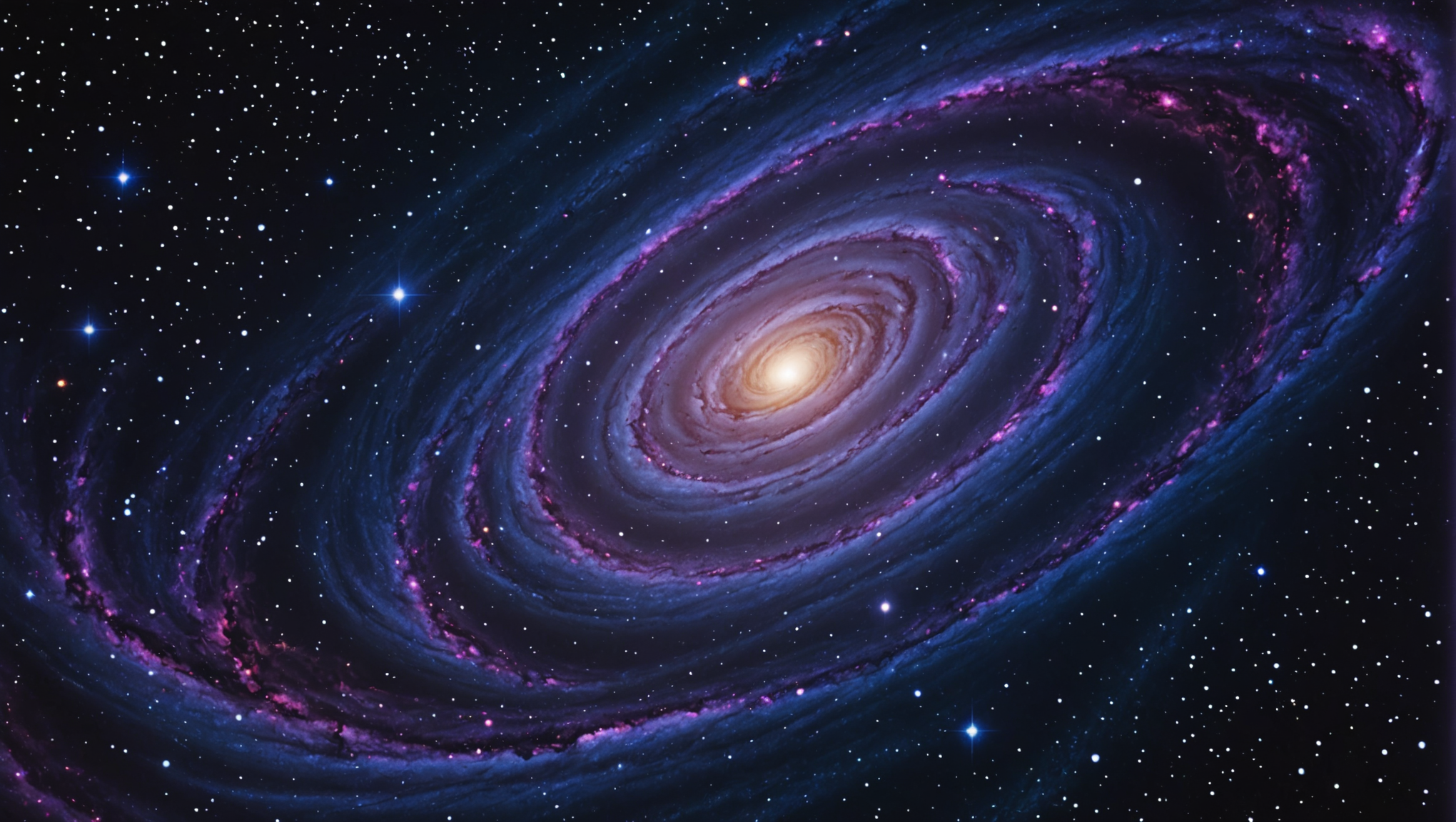Beyond the Veil of Stars

An Overview of Anomalies Beyond the Observable Universe
As we peer into the vastness of the cosmos, we are often reminded that the observable universe is just a fraction of what truly exists. The anomalies beyond this horizon serve as both a puzzle and a tantalizing invitation to explore the unknown. What awaits us in those realms is a thought-provoking blend of scientific intrigue and philosophical speculation. Scientists have defined the observable universe as that which lies within a sphere centered on Earth, encompassing everything whose light has traveled to us since the Big Bang—approximately 13.8 billion years ago. However, the universe has continued to expand in all directions, meaning that many regions that were once near us are now receding faster than the speed of light, pushing them beyond our observational limits.
These cosmic anomalies, whether they reside within vacuum-like voids or are hidden behind the shrouds of gravitational lensing, challenge our understanding of space, time, and the very structure of the universe itself. For example, cosmic voids—vast expanses of space containing very few galaxies—raise compelling questions about the distribution of matter and energy within the universe. Their existence hints at complex processes of cosmic evolution that we are only beginning to understand. What mechanisms have shaped these voids, and how do they interact with the sprawling filaments of galaxies that constitute the cosmic web?
On the other hand, the processes we currently observe may merely scratch the surface of a deeply layered reality filled with hidden structures or phenomena. Consider gravitational lensing, the effect wherein massive objects warp the fabric of space-time around them, bending the light from more distant galaxies. This effect not only allows us to detect otherwise invisible galaxies but also hints at the mass of unseen dark matter concentrated in those foreground objects. Each anomaly observed becomes a window into regions we cannot directly access. This interaction between light and gravity samples a visual audience of previously unperceived realms, suggesting a universe rich with complexity, one that exists far beyond our immediate observational capabilities.
The question of what lies beyond the observable universe has led to many tantalizing hypotheses in state-of-the-art cosmology. The concept of cosmic inflation—a rapid expansion of the universe just after the Big Bang—offers one explanation, proposing that much of what we cannot currently detect lies in a realm not governed by the same laws of physics we experience in our local cosmic neighborhood. This notion invites speculation about the very existence of other universes or dimensions that might harbor exotic matter, diverse forms of life, or even entirely unfamiliar cosmic phenomena. What implications would such discoveries hold for our understanding of existence itself?
As we continue to refine our understanding of these layers beyond the observable universe, we become acutely aware of our limits. The very act of inquiry shifts from a simple quest for knowledge to one that invites humility. In this humbling endeavor, we confront the understanding that for every mystery pieced together, a multitude of new questions emerges—each whispering secrets about cosmic forces that remain just out of reach. To tread these waters of cosmic mystery is to embrace uncertainty, fueled by our deeply ingrained instinct to explore and discover, leaving an open invitation for future generations to unravel these enigmas that lie ever patiently at the edge of the universe.

The Role of Dark Matter and Dark Energy in Cosmic Exploration
At the heart of cosmic exploration lies the profound and enigmatic influence of dark matter and dark energy, two of the most fundamental yet poorly understood components of the universe. Together, they account for an astounding approximately 95% of the total mass-energy content, shaping the fabric and fate of everything we perceive in the cosmos. Despite their invisibility—eluding direct detection through conventional means—their gravitational effects and implications are paramount. It is through these unseen forces that our understanding of the universe is profoundly challenged and expanded.
Dark matter, comprising about 27% of the universe, is the mysterious glue that holds galaxies together. Its presence is inferred from its gravitational influence on visible matter, such as stars and galaxies. Observations of rotating galaxies reveal something remarkable; they spin at speeds that can only be explained if they are surrounded by vast halos of dark matter. Without this unseen mass, galaxies would fly apart, lacking the cohesion necessary to form and persist. This cosmic conundrum compels scientists to develop new frameworks and models to incorporate dark matter into our understanding of galaxy formation and evolution.
In recent years, advancements in observational techniques, including gravitational lensing, have further illuminated the role of dark matter in the universe. By bending light, massive objects such as galaxy clusters provide a lens through which we glimpse these hidden structures. The degree of lensing observed can reveal large concentrations of dark matter that otherwise remain undetectable—solving a piece of the puzzle of the cosmic web’s architecture, which comprises clusters, filaments, and voids. Each detection of dark matter reveals not only the locations of unseen masses but also reinforces the notion that there is much more to the universe than what meets the eye.
Dark energy, on the other hand, is the even more elusive counterpart, constituting roughly 68% of the universe. It acts as a cosmic accelerator, driving the accelerated expansion of the universe observed in supernova studies and the cosmic microwave background radiation. The nature of dark energy poses profound questions and challenges—what is it, and why does it exist? Is it a property of space itself, a dynamic field, or something entirely different? As the universe expands and galaxies drift further apart, dark energy becomes increasingly central in our quest to understand the universe’s ultimate fate. This acceleration complicates our models of cosmology, forcing physicists to reconsider existing theories in light of this enigmatic phenomenon.
The financial and intellectual efforts devoted to studying dark matter and dark energy underscore the reach of human inquiry when confronted with cosmic challenges. Facilities like the Large Hadron Collider and the European Space Agency’s Euclid mission are geared towards unraveling these mysteries. By probing deeper into the fundamental nature of these components, we might inch closer to understanding the underlying structure of reality itself. The endeavor reflects not just the ambition of humankind to explore the cosmos but also a deep-rooted desire to comprehend our origins and destinies.
Reflecting on dark matter and dark energy not only expands our scientific horizons but also invites philosophical contemplation. As we search for answers within this cosmic framework, we are challenged to reconsider the limitations of our perceptions, ethics of investigation, and our roles within the universe. Are these mysterious constituents merely puzzles to be resolved, or do they serve as mirrors reflecting the intricacies of existence? In grasping their elusive nature, we embark on an intellectual journey, probing insights that transcend mere numbers or equations, leading instead into the realm of wonder and existential questioning.
In this framework of dark matter and dark energy, we find both a call to scientific action and an invitation to further ponder the human experience, intertwined with the very cosmos we seek to understand. As researchers peer into the unknown, they ignite a shared curiosity that transcends disciplines, inspiring future generations to continue exploring the mysteries that lie at the very edges of existence.

The Impact of Advanced Technologies on Cosmic Discovery
In the unending pursuit of cosmic knowledge, advanced technologies have emerged not just as tools but as gateways facilitating deeper engagement with the universe’s mysteries. These innovations evolve rapidly, often reshaping our methodologies and altering the landscape of what we consider observable and comprehensible. As we strive to unveil the secrets of cosmic anomalies, each technological breakthrough propels us into realms previously confined to theoretical musings and inspires fresh inquiries that challenge our understanding of reality.
At the forefront of this technological revolution is the advancement of space telescopes. Instruments like the Hubble Space Telescope have changed how we perceive the universe, enabling us to peer deeper into the cosmos than ever before. The recent deployment of the James Webb Space Telescope represents a monumental leap in our observational capabilities, allowing scientists to capture unprecedented details from the faintest objects in the universe. Its infrared technology equips researchers with the ability to visualize celestial bodies obscured by cosmic dust, further expanding our knowledge of distant galaxies, star formation, and even the atmospheric compositions of exoplanets. With each photograph captured, the James Webb unveils scenes of cosmic dynamism, revealing a tapestry of formation, evolution, and the interconnectedness of matter across vast distances.
Moreover, advancements in artificial intelligence (AI) are revolutionizing how we process and interpret the bounty of data gleaned from our explorations. The application of machine learning algorithms enables astronomers to sift through enormous datasets efficiently, revealing patterns and anomalies that might have otherwise been lost amid the noise. For instance, AI is increasingly employed to classify and catalog cosmic events, identify new celestial objects, and even predict the behavior of astrological phenomena, turning what previously took months or years into minutes or hours. This efficiency not only accelerates the rate of discovery but also democratizes the analysis process, allowing researchers from smaller institutions and universities to participate in significant groundbreaking work that influences our understanding of the cosmos.
The rise of gravitational wave astronomy epitomizes another frontier made accessible through technology. The detection of these ripples in space-time, originating from cataclysmic cosmic events like merging black holes, has opened a new window into the universe’s most violent occurrences. Instruments such as the Laser Interferometer Gravitational-Wave Observatory (LIGO) and its successors tap into the subtle changes in space-time caused by distant cosmic phenomena. This capability not only provides insights into the nature of black holes but also encourages a novel approach to astronomy that blends gravitational physics with an understanding of cosmic evolution. As we continue to refine these instruments, we find ourselves in a position to detect rarer and more complex events that challenge our fundamental understanding of the universe.
Emerging technologies in theoretical physics, such as quantum computing, also promise to advance cosmic exploration in significant ways. With their capacity to process vast amounts of information and solve intricate problems beyond classical computers’ reach, quantum computers could simulate complex cosmic scenarios, providing insights into everything from black hole thermodynamics to the behavior of dark matter. This capability allows scientists to test hypotheses that would be computationally prohibitive otherwise, guiding research into entirely new realms of possibility.
Additionally, interdisciplinary collaborations – merging fields such as computational modeling, physics, engineering, and even neuroscience – are crafting innovative approaches to cosmic exploration. When scientists from diverse backgrounds unite, creative solutions can blossom, leading to the development of instruments and methodologies tailored for unprecedented challenges. Projects like the Event Horizon Telescope highlight how combining expertise across institutions globally was necessary to produce the first image of a black hole’s event horizon, an endeavor that required technological ingenuity and scientific cooperation. Such initiatives continue to demonstrate that the boundaries of our knowledge are not defined by specialization but rather by our collective capacity to consider beyond our separate fields.
As we harness the power of these advanced technologies, it is imperative to foster public engagement and outreach efforts that can demystify the complexities surrounding our cosmic pursuits. Initiatives that intertwine art, storytelling, and science can illuminate complex concepts, breeding a culture of inquiry and inspired curiosity. Public access to these advancements, through interactive exhibits or citizen science projects, can evoke a sense of wonder among the wider population, encouraging them to participate in the exploration of anomalies beyond the observable universe.
The impact of advanced technologies on cosmic discovery is transformative, reshaping not only the tools we use but also our understanding of the cosmos. As we continue to innovate, we find ourselves faced with not only the opportunity to explore deeper but also the profound responsibility that comes with such exploration. With each technological leap, we are drawn into a further engagement with the universe, igniting curiosity, sparking discovery, and enriching our collective narrative about our place in the grand design of existence.
Philosophical Implications of Anomalies at the Universe’s Edge
The exploration of anomalies at the universe’s edge beckons us to engage with some of the most profound philosophical implications of our time. As we probe these cosmic mysteries, we confront questions that challenge the very foundations of our understanding of reality. If the universe extends beyond what we can currently observe, what does that say about our perception of existence and our place within it? The boundaries we impose on what is observable may, in fact, limit our appreciation of a much wider cosmic narrative that has been unfolding long before humanity gazed at the stars.
Ponder the implications of cosmic inflation, a theory that suggests a rapid expansion of the universe just after the Big Bang, propelling vast regions beyond our observational capacity. The mere notion that much of what exists is hidden from our sight encourages a profound sense of humility. For every bright star or swirling galaxy captured in our telescopes, there are likely as many, if not more, that exist in a reality we have yet to comprehend. Furthermore, the inquiry into what lies beyond—other dimensions, parallel universes—provokes existential reflection. In a vast multiverse where every possibility might exist, how do we define our singular experience of reality? Are we merely a random evolution in a much larger cosmic tapestry that we cannot fully see or understand?
The allure of these anomalies also raises questions about the very nature of knowledge and inquiry. As scientists grapple with these unknowns, they must navigate between empirical evidence and theoretical exploration, embracing uncertainty in their quest for understanding. This philosophical tension can foster a culture of openness, where the unknown is not something to be feared, but celebrated as a pathway to growth. Rather than viewing scientific inquiry as a linear journey toward definitive answers, we may come to appreciate it as a rich, winding path filled with unexpected discoveries—each revealing not just more about the universe, but more about ourselves.
Additionally, as we contemplate the nature of the universe, we cannot ignore the ethical considerations that arise. In our pursuit of answers, do we risk intruding upon realms that should perhaps remain untouched? If the cosmos teems with forms of life that we know not of, what obligations do we carry? Shifting our focus from Earth to the cosmos compels us to reassess our values, and to recognize our role in a larger community composed of all sentient beings, whether they dwell on our planet or exist among the stars. What principles should guide our explorations, and how can we ensure they reflect a deep respect for the interconnectedness of all existence?
Philosophical reflections on anomalies at the universe’s edge invite us to peer beyond mere scientific curiosity and contemplate the essence of consciousness itself. As we probe the fabric of reality, we must also think the existential questions that shape our human experience. Are we alone in our quest for meaning? Is consciousness merely a byproduct of evolution within a vast, indifferent universe, or is there a deeper purpose at play that transcends our understanding? Each encounter with the unknown can prompt a re-evaluation of these concepts, unsettling our preconceived notions and inspiring a search for meaning in the grand orchestra of the cosmos.
As we engage with these philosophical implications, we are reminded that our explorations into the universe are ultimately about connection—connection with the mysteries of existence, and connection with each other. The pondering of what lies at the edges of our understanding nurtures a collective curiosity that unites us, regardless of our disparate backgrounds or beliefs. As we share in this journey, we build a community of seekers, each contributing to the ongoing conversation about what it means to inhabit this universe. In doing so, we enrich not only our comprehension of the cosmos but also our collective narrative, inspiring generations to come to question, explore, and marvel at the boundless possibilities that await just beyond the horizon.